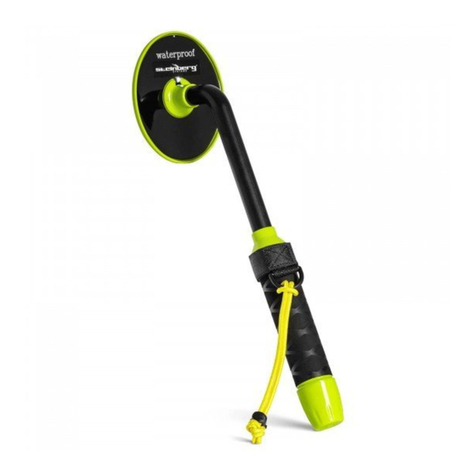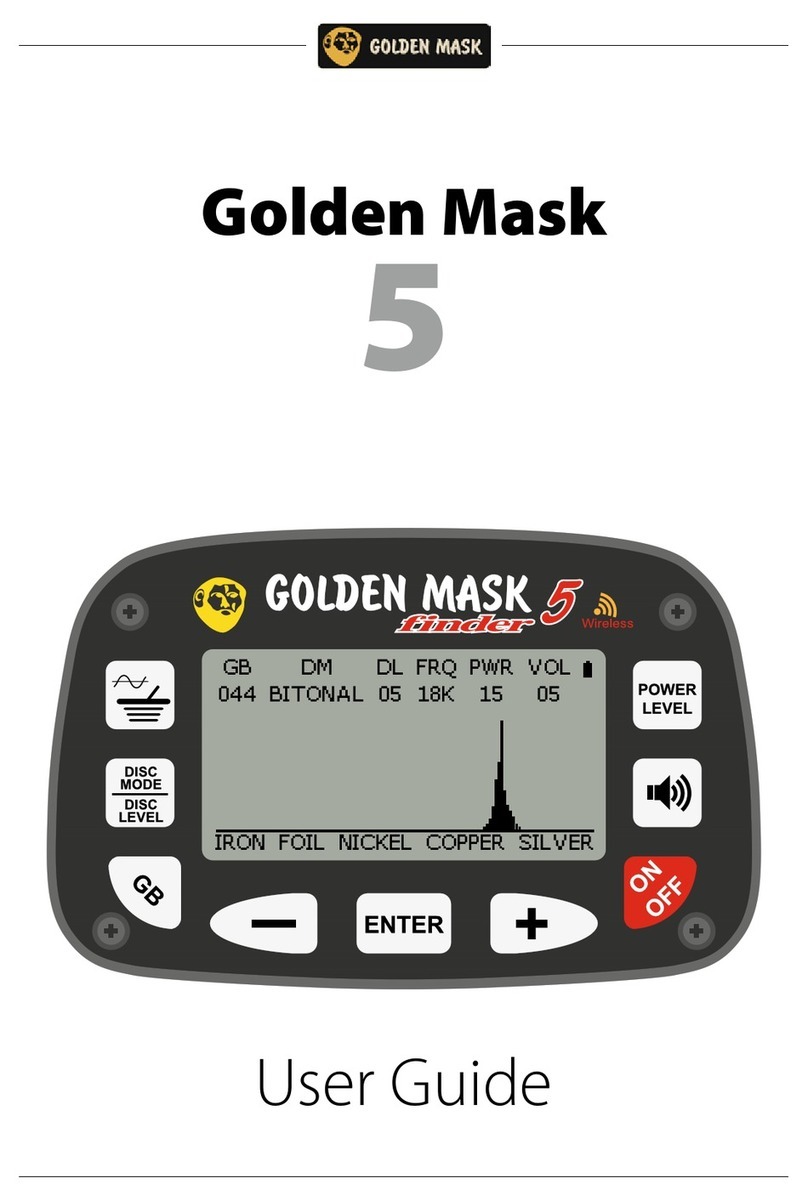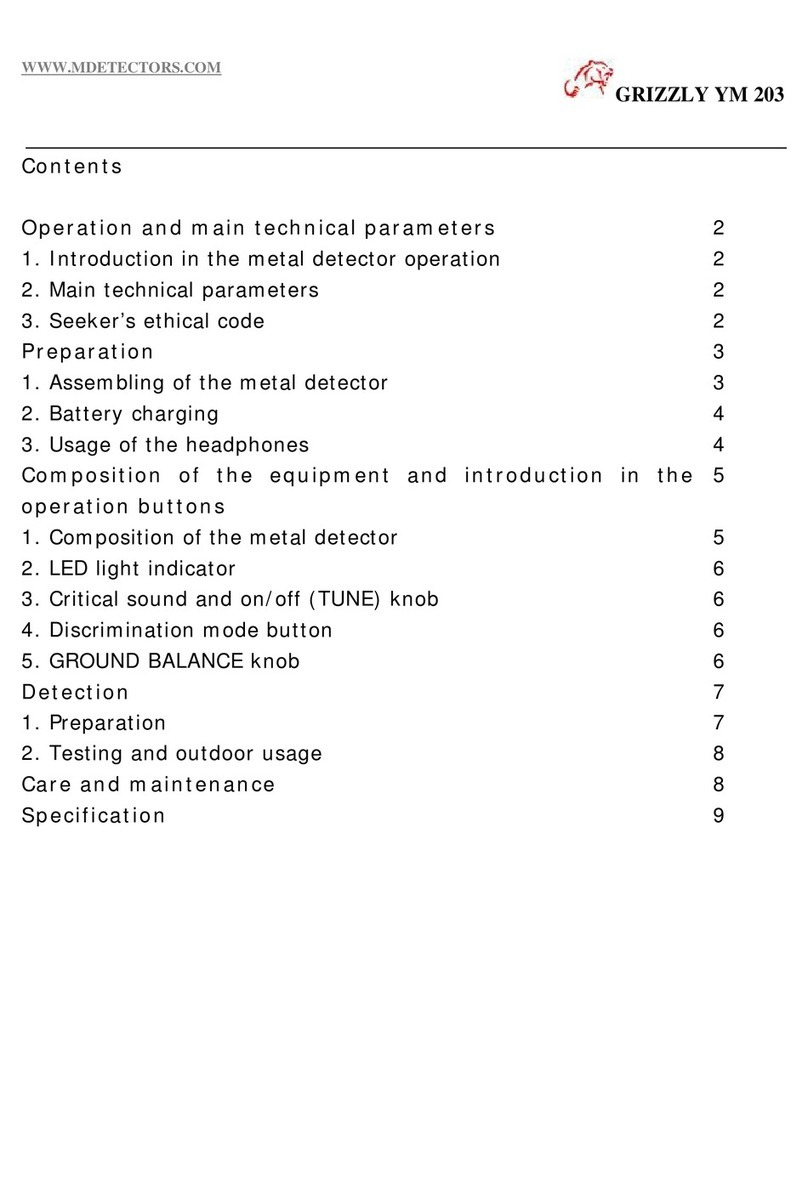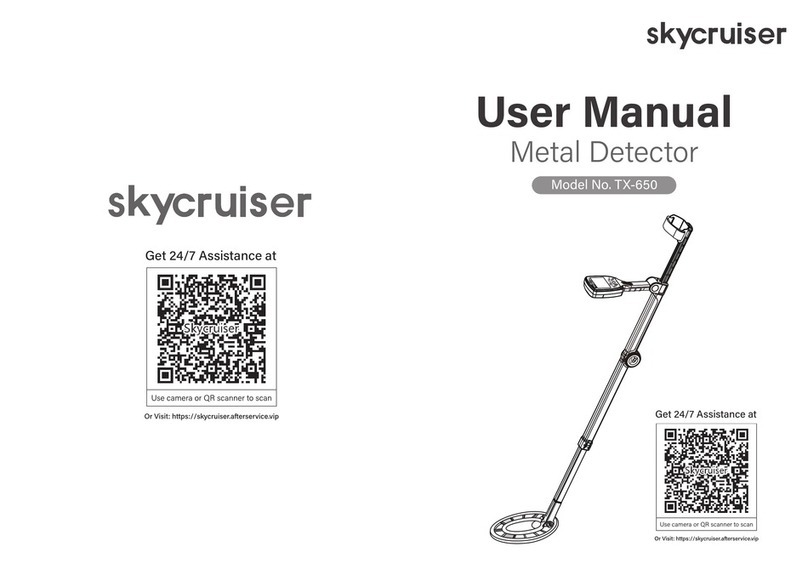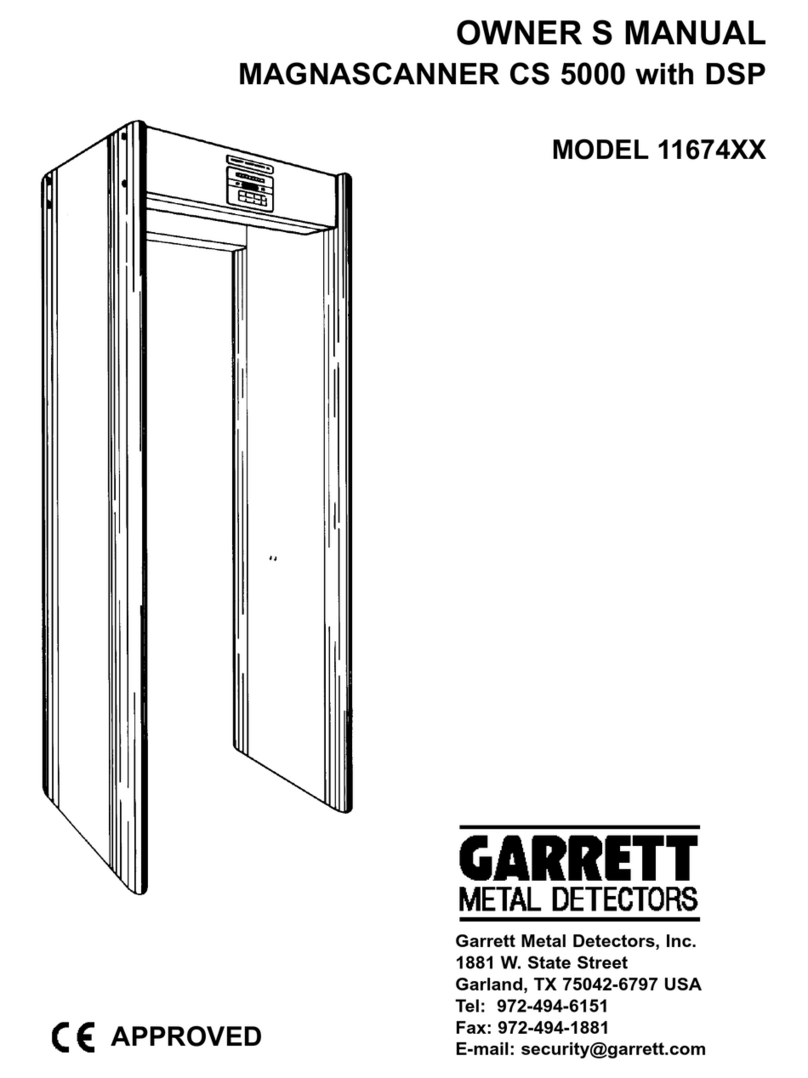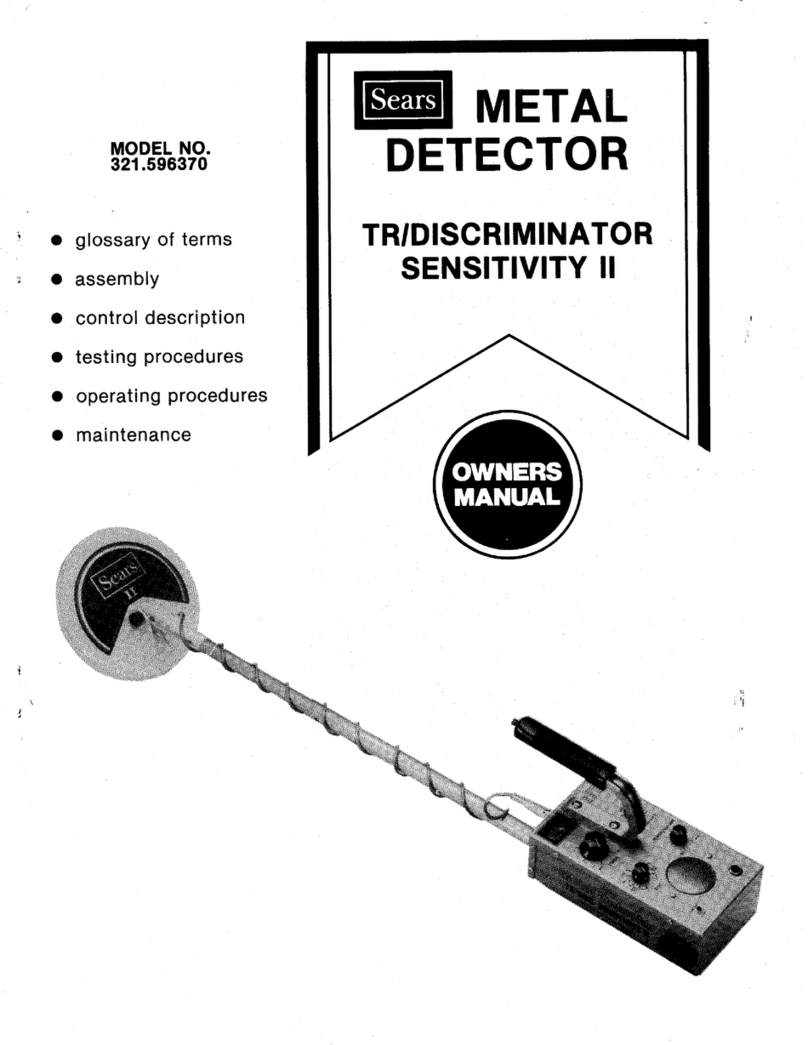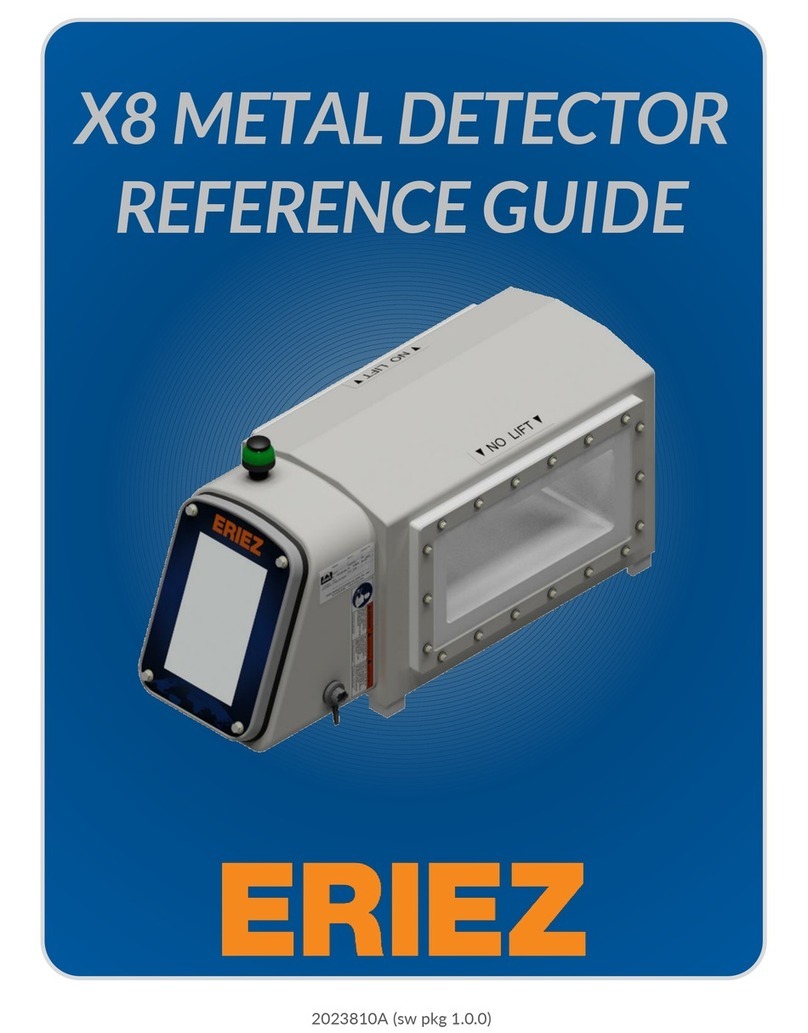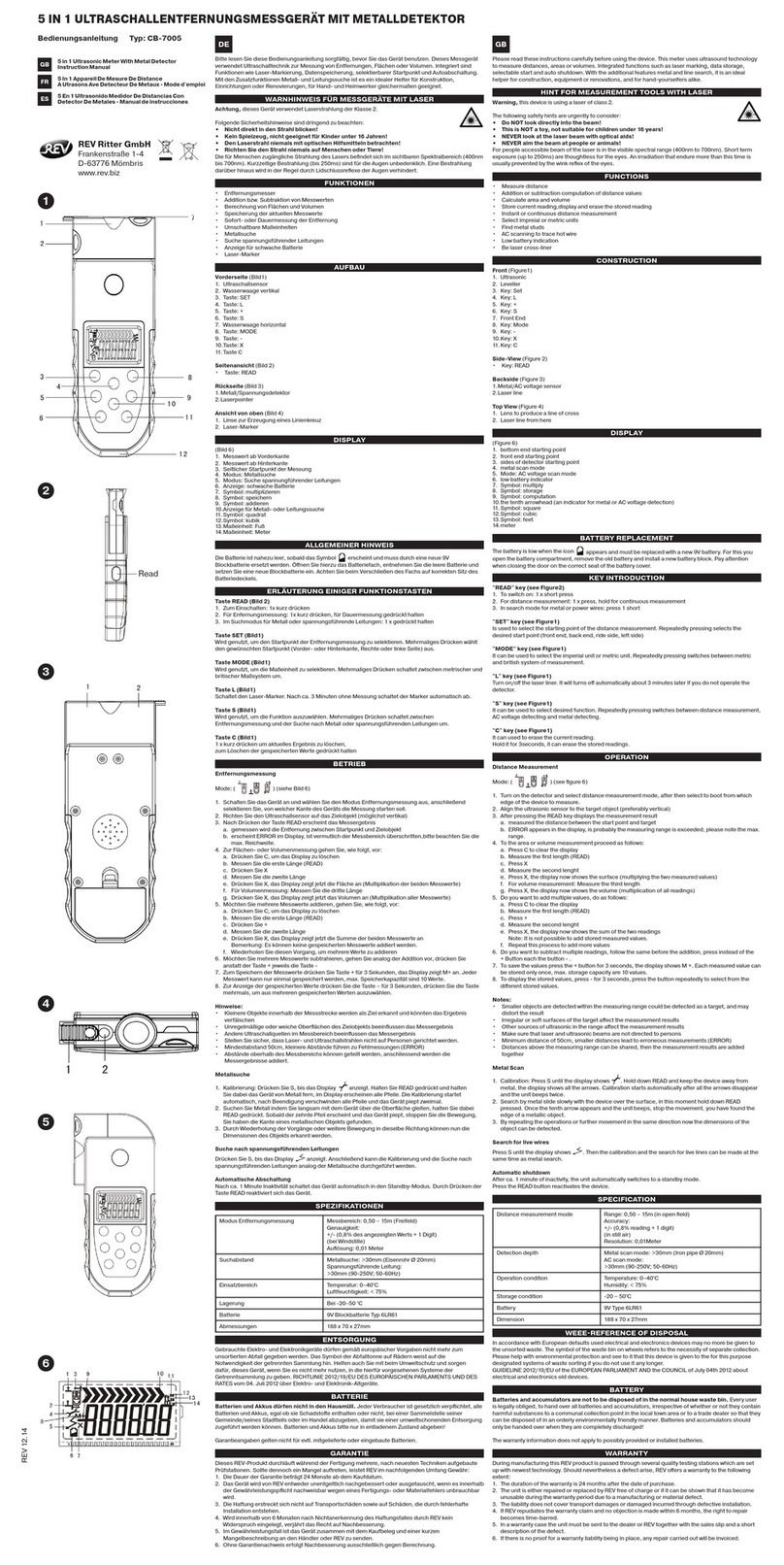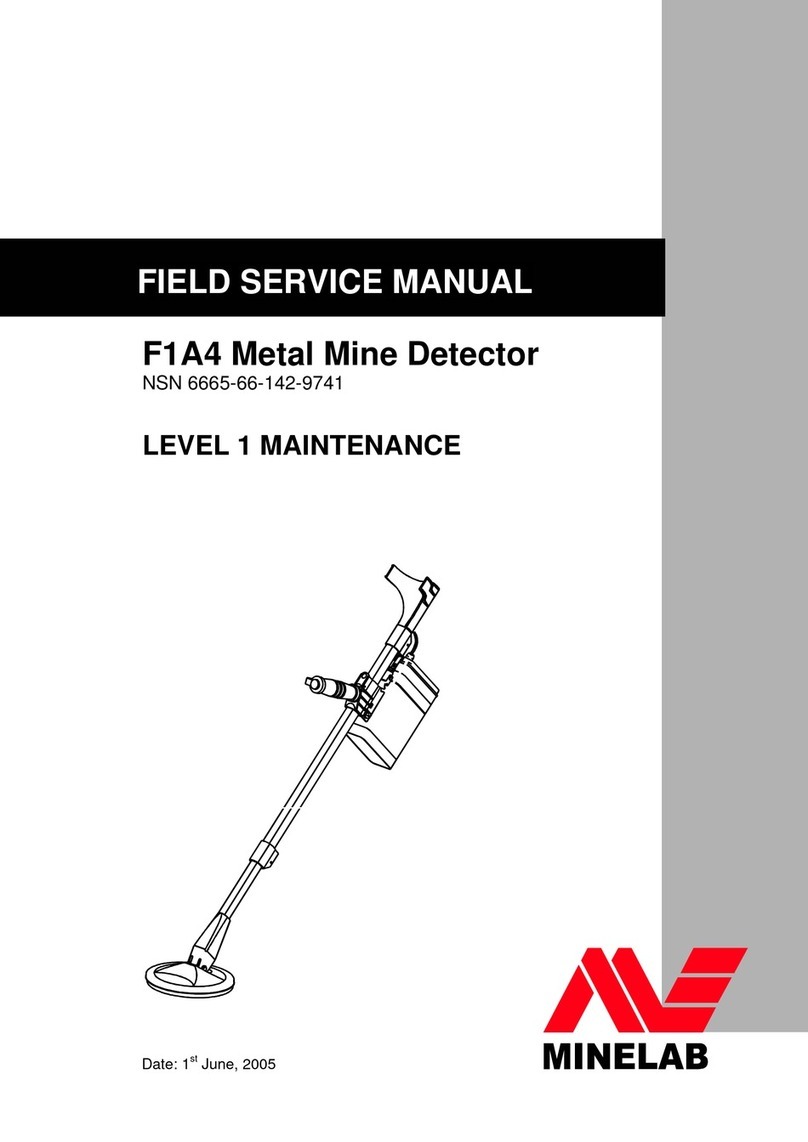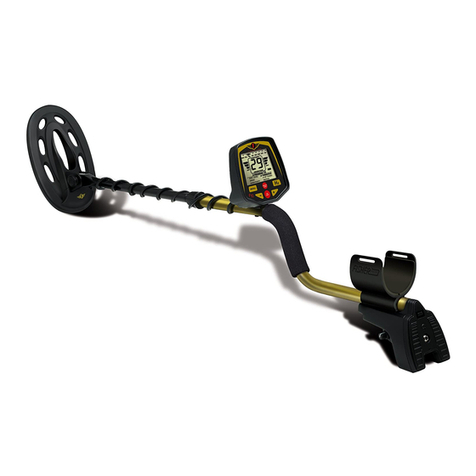
- 15 -- 14 -
1. Turn On
2. Set the Operation Mode
3. Choose the Sensitivity
Take a 25¢ silver coin and move it closer to the search coil slowly. At the
position of about 7" to 8", the first set of the signal strength cursor begins to
appear, the sound becomes louder and the tone becomes higher. If you
continue to move the 25¢ silver coin, the signal strength cursor changes to
the full grid in a second, and it sounds louder. Meanwhile, the depth indicator
indicates the depth decreases correspondingly to have only one grid left,
showing that the metal is gradually approaching the center of the search
coil (See Fig. 16).
TX-910 is designed for outdoor use. There are too many objects indoors and all
kinds of electrical equipment that will cause interference. It is not suitable to
use the detector indoors.
Field detection will be more complicated. Because there are so many elements
that will affect the detection results, such as the composition of the regional
soil, the component, size, shape and the oxidation degree of the underground
metals. The following content is only the general steps for field detection. You
should operate the detector again and again to accumulate your experience to
achieve good results.
Hold the detector, and keep the search coil away from the ground. By pressing
the Power button, the detector will sound two tones, and all the LCD lights up
for a while. And the detector is restored to the setting of the last shutdown.
In general, the user could choose the ALL METAL mode. In this mode, the
detector will respond to all kinds of metals.
The user tends to set the sensitivity higher. However, in the higher sensitivity
range, the detector will be more sensitive to the electromagnetic interference
that comes from the power lines or cables around, and it will react abnormally
to the mineralized soil or soil with electrical conductivity. If you move the search
coil in the detection area, and the detector sends an unstable false signal,
please decrease the sensitivity.
If you operate the detector with your partner at the same time, please pay attention
to keep more than 393.7 inches away from each other, and decrease the sensitivity
appropriately.
b)
Press the P-P key again to exit the PINPOINT mode and the P-P icon will be
removed.
By following all the steps above, you will have a basic knowledge of the
detector, and you can move on to the next part of the basic operation.
c)
Fig. 16
COIN
DEPTH
MODE
FERROUS
NON - FERROUS
GOLD SI LVER
40 50 60 70 80 90
SE N S
MOD E
25
Basic Operation
